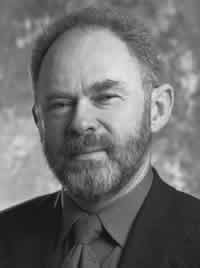
Richard Tweedie
Richard Tweedie, a member of the Bernoulli Society since 1980, an Associate Editor of Bernoulli, and who would have been an incoming member of the Bernoulli Society Council in August, died in the US on 7 June. At the time he was Head of the Division of Biostatistics at the University of Minnesota. He is survived by his wife Catherine Tweedie (née Robertson), whom he married in 1971, his daughter Marianne, his sister Joan, his brother Bruce and his mother Nel.
Richard was born on 22 August 1947 in the rural town of Leeton in the Australian state of New South Wales, the elder son of Nel and the late Lewis Tweedie. While at Leeton High School he successfully competed with senior students across Australia for a National Undergraduate Scholarship to the ANU, and studied there for a Bachelor of Arts degree. He graduated in late 1968 with First Class Honours, and, for the purpose of undertaking graduate work, was awarded one of only two ANU Travelling Scholarships given annually.
He was influenced by David Vere-Jones, then at the ANU, to work with David Kendall at Cambridge, and he departed for the UK in mid 1969. The Australian academic year is out of kilter with that in the north, and so Richard had a little more than half a year of uncommitted time between finishing his BA and starting his doctoral work. In a manner that was to become so typical of his extraordinary capacity and dedication, he put the period to good use to obtain an ANU MA degree by research.
Thus, his MA was conferred in 1969 and his PhD in 1972. After completing his work at Cambridge he returned to Canberra, and from 1972 to 1974 he was a Postdoctoral Fellow in the Statistics Department in the Institute of Advanced Studies at the ANU.
His exceptional and multifaceted talents were quickly recognised by Joe Gani, who was Chief of CSIRO's Division of Mathematics and Statistics (DMS). Joe persuaded Richard to join the division in 1974. (CSIRO, or the Commonwealth Scientific and Industrial Research Organisation, is a large research body operated by the Australian federal government.) Richard took a year's leave in 1978 at the University of Western Australia, before moving to Melbourne to head the Victorian office of DMS.

Richard Tweedie
At that time the legislation under which CSIRO functioned made it impossible for the organisation to work directly with industry, as it does today. Therefore DMS established a separate company, Siromath Pty Ltd, for the purpose of consulting; Siromath was initially funded by industry as well as CSIRO. Richard moved to Sydney in 1981 to lead that enterprise.
In 1987 he joined Bond University (generally credited with being Australia's first private university) as their Foundation Dean and Foundation Professor of Information Sciences. There he stayed until taking up a position as Professor of Statistics at Colorado State University at Fort Collins. He was Department Chair there from 1992 to 1997, and moved to the University of Minnesota in 1999.
The seeds from which Richard's research interests in applied probability developed were sown in Canberra in the mid to late 1960s by Chip Heathcote, Eugene Seneta and David Vere-Jones, and in Cambridge by David Kendall. He made many significant contributions to the theory of Markov chains on very general state spaces. In recent years his work on Markov chain Monte Carlo methods, for example his contributions to the theory of convergence rates, was especially influential. The Applied Probability Trust will publish, in the Journal of Applied Probability, an extensive appreciation of Richard's scientific contributions, including a bibliography. An autobiographical account of his life up to 1986 appeared on pages 291-308 of The Craft of Probabilistic Modelling -- A Collection of Personal Accounts, Edited by Joe Gani and published by Springer in 1986.
I first met Richard in Canberra in 1974, while I was working on my MSc. I'll always remember him as supremely positive, optimistic, supportive -- and sharp. He had limitless energy, and he was generous in his advice and his assistance to others. For example, I'll remember his patience in explaining what it was like to be a PhD student in the UK. Our research interests were never sufficiently close for collaboration, but while he was at Bond University we set up a small `consortium' to attract funding from industry for basic research. It worked, for a longer period than I had expected. It's so difficult to appreciate that a friend and mentor with so much drive, energy, vitality, resourcefulness, enthusiasm and wit, and so much to offer the profession, is no longer with us.
Acknowledgements. This brief account of Richard's life has benefited from helpful conversations with Joe Gani and Chris Heyde. The kind permission of School of Public Health at the University of Minnesota to reproduce the photo of Richard Tweedie is gratefully acknowledged.